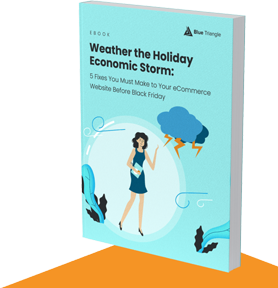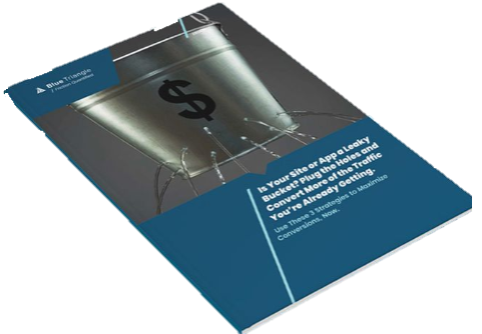"That'll never work."
If you're like most innovators, you've heard those words more times than you can count. But what if I told you that "that'll never work" isn't the end of an idea — it's the starting line?
Inversion thinking — asking "how could this fail?" — is one of the most powerful tools for transforming friction into fuel. By actively seeking out failure points early, we don't kill ideas. We strengthen them. We turn potential roadblocks into on-ramps for breakthrough innovation.
Nick Paladino and I explored this concept deeply in a recent episode of The Frictionless Experience podcast with Leslie Grandy, a digital transformation leader with experience at Amazon, Best Buy, and T-Mobile.
Leslie summed it up perfectly:
"Sometimes some of the most creative people I've had are lawyers and finance people who've helped me figure out how to get something done that didn't seem possible to do."
Creativity isn't confined to artists or designers. It's woven into every solution-oriented mind in your organization — if you let it be.
Turning Friction Into Creative Fuel
Leslie shared a story at T-Mobile about a brilliant idea that hit unexpected roadblocks: a 3G-enabled wireless picture frame.
"It was so well received in research and so well received in prototyping stages that everybody said, 'We've got to get this out for Christmas'," said Leslie.
It had everything: customer love, market timing, and an innovative edge. But there was a catch. The frame required a T-Mobile voice plan because — at the time — T-Mobile had no way to sell data-only products.
"Unless you were a customer already of T-Mobile, you couldn't buy that frame," recalled Leslie.
They sold tens of thousands instead of hundreds of thousands because a fundamental operational hurdle was missed — no data-only plans for new customers. Had inversion thinking been applied early ("How could this fail?"), the team might have foreseen this barrier and worked toward a solution.
How Inversion Thinking Works
Leslie broke it down simply:
"Just having those failure points identified shouldn't be enough of a reason to kill the idea."
Instead of seeing friction as fatal, inversion thinking treats it as diagnostic. It invites teams to surface objections early, not to crush creativity, but to channel it into stronger, more resilient ideas.
Rather than "this can't work," the mindset becomes: "What would have to be true for this to work?"
When we asked Leslie about teams shooting down ideas too quickly during hackathons, she noted the importance of reframing "negativity" as a constructive force:
This isn't just optimism — it's strategic creativity.
Moreover, Leslie pointed out that the culture within companies needs to be designed to encourage open dialogue and comfort with ambiguity:
"You have to be willing to hear their perspective... willing to say, why do they see it differently?," she said.
It's this willingness to shift perspectives that unlock solutions beyond initial imagination.
Inversion in Practice: Curbside Pickup
Think about how curbside pickup reshaped retail. Leslie pointed out:
"I pay for it before you pick and pack it. I literally am ordering and paying ahead of goods being delivered to me, which has never happened in a physical grocery store before."

Had someone asked early, "How could grocery pickup fail?" they might have said, "People won't trust others to pick their bananas." And yes, Leslie admits that picking produce is tricky.
Nick joked during the episode:
"Can we talk for a minute though about trusting someone else to pick your bananas?"
But by designing curbside for non-perishable, known items first (like a TV at Best Buy), teams minimized that risk. Importantly, the curbside pickup experience also demonstrated how customer friction can evolve. As Leslie noted:
Understanding the real point of customer friction allowed retailers to redesign the experience entirely.
Ready to start using inversion thinking?
Here are five actions you can take today:
- Start Every Brainstorm with "How Could This Fail?": Begin ideation sessions by listing potential failure points. Treat them as design challenges, not roadblocks. Identify risks early when it's still easy to pivot.
- Invite Diverse Perspectives Early: Bring in legal, finance, operations, engineering, and customer service teams at the concept stage. Their "friction instincts" will reveal hidden pitfalls that creative teams might overlook.
- Create a "Pre-Mortem" Habit: Before investing heavily in an idea, conduct a "pre-mortem" session where teams imagine the project has failed spectacularly. Then, work backward to uncover likely causes — and build plans to avoid them.
- Reward Constructive Objections: Celebrate team members who thoughtfully raise potential failure points. Make it psychologically safe to challenge assumptions without fear of being labeled "negative."
- Prototype Risk Factors Alongside Ideas: Don't just prototype the product; prototype the risks, too. Build small tests that intentionally stress your riskiest assumptions and learn fast where the real vulnerabilities lie.
Embrace Friction as Your Accelerator
In her upcoming book Creative Velocity, Leslie shares that every creative breakthrough she studied carried lessons from failures that didn't make it to market. She captured it best:
"Failure is a necessary attribute of success."
True innovation doesn't avoid friction — it uses it. Every "that'll never work" moment fuels deeper thinking, better designs, and frictionless customer experiences.
So the next time someone voices a concern about your big idea, don't shut them down. Hand them the mic. Let inversion thinking reveal hidden weak spots — then fix them. Because friction, when properly harnessed, isn't the enemy of innovation. It's the engine that powers it.
Want to dive deeper into Creative Velocity and how inversion thinking can supercharge your innovation culture? Listen to this episode of The Frictionless Experience and heck out Leslie Grandy's new book at creative-velocity.com.

During the holiday rush, every shopper matters
Optimize the customer journey before the eCommerce event of the year.

.jpg)



